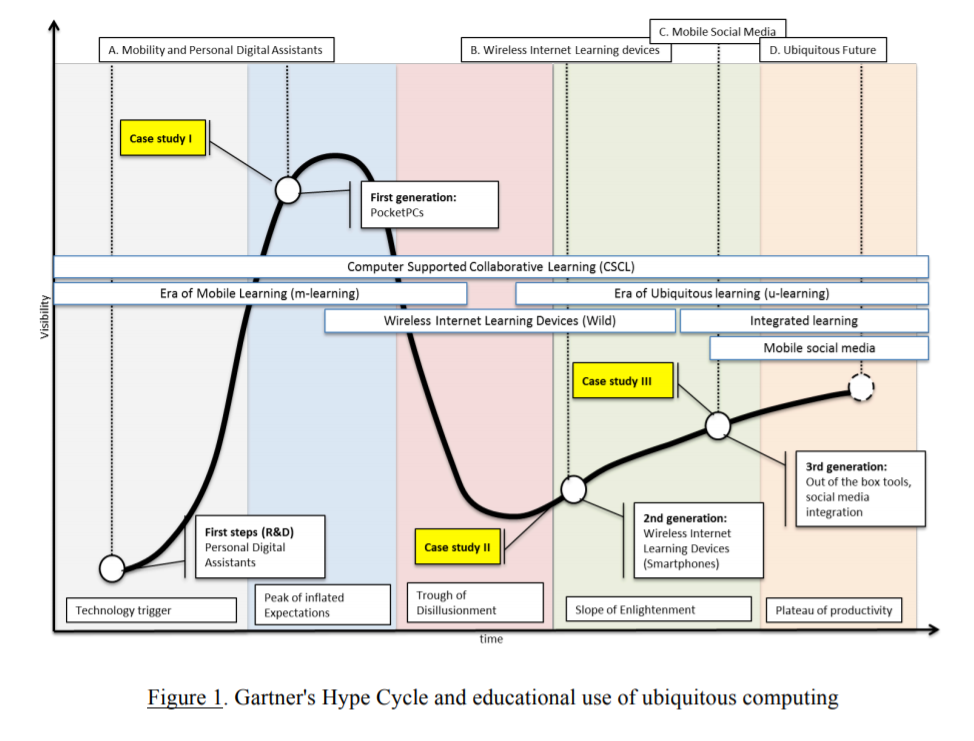
Research in the field of educational use of ubiquitous computing illustrates the rich field of business and research opportunities. The Hype Cycle and case studies described here emphasize that pedagogically grounded instructional design is needed in order to put emergent technologies into effective use. The employment of mobile devices, including mobile phones and tablets, is a growing trend in education.
We share the constructivist belief that students should learn in environments that deal with “fuzzy,” ill-structured problems. Designing challenging collaborative learning tasks provides students with an opportunity for multiple strategic activities and for self-regulation and shared regulation of learning.
Challenging learning tasks require scaffolds and support. As suggested by Spiro et al. (1991), the same content can be elaborated multiple times. In practice, this means that students encounter multiple representations of content using different analogues, examples, and metaphors.
From the present perspective, this field of research is currently in the phase of the plateau of productivity. The world is entering the Age of Mobilism (Norris & Soloway, 2011). Ubiquitous computing has evolved from Weiser’s initial ideas about the interplay between the human world and communication technologies. Current trends are increasingly focusing on effective personal learning environments.
Auto326